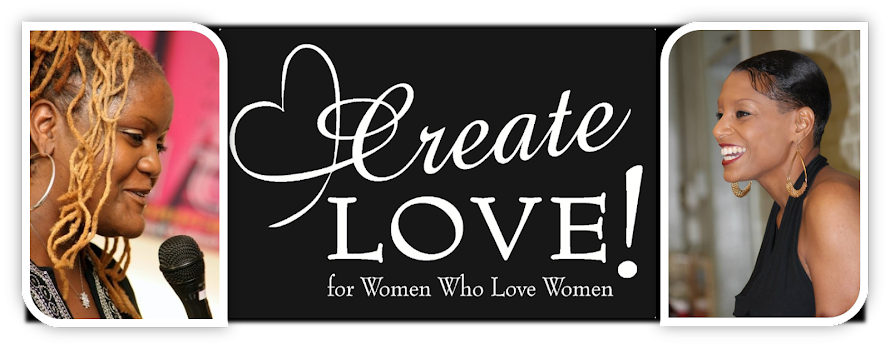
Monogamy. Polyamory. BDSM. Bisexuality.
Swinging. And the list goes on.
Some women will cringe at the mere thought of anything beyond monogamy. But who
are we to decide what happiness should look like for others? Whether it is for
you or not, as a community, we must open our hearts and minds to embrace
everyone in it. You can decide it is not for you without judging or attacking
another for deciding otherwise.
We cannot espouse and advocate for marriage equality, LGBT
rights and inclusion while simultaneously oppressing others in our community. There is no homogeneous gay template. We do
not go pick up our daily “gay thought” for the day. We are as diverse as any other
group of people. As such, our richness is in that very diversity. The key to
our unity is in broadening our awareness, educating ourselves and climbing off
of the high horse of judgment.
I am sure most of
us can tell stories of those who have been wounded in our community, by our
community, just for being different--Shame on us. I have friends who are
bisexual; I know of women who identify as butch/stud/masculine and are
attracted to other butch women; I know of couples who are swingers; And I know
of couples who are polyamorous. Unfortunately, many of them can tell stories of
being grossly judged and in some cases mistreated and alienated from the gay
community.
My question is what
makes us do that? Is it the fear that somehow their beliefs will spill over to
us? Is it the fear that somehow they will taint the perception of what it means
to be gay? Or is it simply the fear of the unknown? I’m not sure of the answers
to those questions. But what I am sure of is that the resolution is in
education, awareness and openness. To that end, I have included some
definitions to get us started in opening our minds and hearts. You may
disagree, you may feel confused or anxious but at least you will have the
information to begin to understand:
- POLYAMORY: Polyamory is emotionally connected relationships openly involving three or more people. It is about honesty, integrity and respect. Some examples of polyamorous relationships; a couple who live together or are married and have other emotionally connected sexual relationships, three, four or more people can all live together as a family, raise children and have emotional and sexual connections between all or different combinations within the group. (from www.lovemore.com)

- SWINGING:Swinging, also commonly referred to as, “The Lifestyle” or as the, “Swinging Lifestyle”, is a type of sexual practice that usually refers to couples having consensual acknowledged sex with other couples or an individual, usually a woman. Swinging can be very recreational and
- incorporate many different couples and/or singles, or a swinging couple can make a commitment to one specific other couple or individual to swing with and get to know, socially and emotionally as well as sexually. Traditionally, swinging refers to heterosexual couples or straight men and bi-curious women, however, swinging is becoming more and more diverse. There are now swinging SMBDers and fetish dressing swingers, as well as gay and lesbian swingers. Different swing clubs will accept different practices, such as, some are open to singles of both genders and bi-curious individuals of both genders while some are still only open to single women and bi-curious women but not single or bi-curious men. Most swing clubs are very open to people of varying size and shape, which provides acceptance to many individuals who may feel discriminated against or put down elsewhere. (definition from http://www.eroticcouplesclub.com/swinging.htm)
- BDSM: BDSM represents a variety of erotic practices involving dominance and submission, role- playing, restraint, and other interpersonal dynamics. Given the wide range of practices, some of which may be engaged in by people who don't consider themselves as practicing BDSM, inclusion in the BDSM community and/or subculture is usually dependent on self-identification and shared experience. Interest in BDSM can range from one-time experimentation to a lifestyle, and there is debate over whether a BDSM or kink sexual identity also constitutes a form of sexual orientation. (definition from http://en.wikipedia.org/wiki/BDSM)
- KINK: In human sexuality, kink describes a range of practices which overlap with BDSM: spanking, tickling, bondage, dominance and submission, sadomasochism, cuckoldry, fisting and sexual fetishism. Kinky practices go beyond what are considered conventional sexual practices as a means of heightening the intimacy between sexual partners. Some draw a distinction between kink and fetishism, defining the former as enhancing partner intimacy, and the latter as replacing it, while others define "kink" as lesser (possibly socially acceptable) form of fetishism. Because of its relation to "normal" sexual boundaries, which themselves vary by time and place, the definition of what is and is not kink varies widely as well. Practitioners are sometimes considered to be "perverts" by "outsiders".(definition from http://en.wikipedia.org/wiki/Kink_(sexual)
These definitions simply offer a beginning overview
and insight into alternative ways to have relationships. I do not have all of
the answers, but I do have lots of questions and a genuine desire to be
educated. I hope you join me in that sentiment. I also believe that sexuality
exists on a continuum. And the more we try to box ourselves into someone else’s
myopic view of who we should be the more misery we will create for ourselves.
If you are in Atlanta, SharRon and I invite you to join us in
person for a grown-woman conversation on this very subject. If you are not in
Atlanta then I encourage you to start these conversations in your community, or
with your circle of friends. Either way I wish you great success on your
journey to Create Love.
NYA AKOMA,
Imani Evans, MA
Join us for a great discussion
LOVING OUT LOUD: The Many Ways to Create
Love
Saturday, May 4, 2013
Little 5 Points Community Center
Suite 005
Atlanta, GA 30307
404.944.6409
$5.00 donation



No comments:
Post a Comment